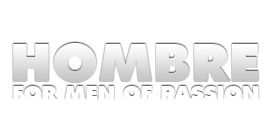Seattle Seahawks Richard Sherman: A Quick Study in Crisis PR
31 Jan 2014 by John P. David in Advice, Advice, Celebrities, Event, Fame, Self Help, Sports, Television

Like millions of other football fans, I watched the NFC championship game when the Seattle Seahawks defeated the San Francisco 49ers to advance to the Super Bowl. At the end of the game Seattle defensive back Richard Sherman was interviewed by Fox’s Erin Andrews, and he proceeded into an epic rant disguised as an interview. The Seahawks had just advanced to the Super Bowl, but the only thing Sherman wanted to do was disparage 49ers receiver Michael Crabtree. The vitriol spewing, wild-eyed Sherman appeared unhinged. Take a look.
Because he plays on the West Coast for a small market team, this was the first exposure to Sherman for many fans. Frankly, I think a huge chunk of the American population thought he was nuts. (Some viewers, myself included, immediately took to social media because the rant was reminiscent of fictional character Clubber Lang from Rocky III — as portrayed by iconic actor Mr. T.)
News of Sherman’s rant spread like wildfire and very quickly started to overshadow the accomplishment of the Seahawks. He didn’t back down that evening, and many television personalities teed-off on Sherman, vilifying him and calling him a thug among other names.
What happened next is very interesting. Less than 24 hours after the rant, Sherman did an excellent job of repairing his tarnished image. Whether he mapped it out or not, he followed some critical steps in managing a PR crisis.
In the clip below from his news conference the following day, take notice of how he handled himself.
First, he apologized and he did it quickly. While not completely backing down from his statements about his arch-enemy Crabtree, he apologized about the rant and acknowledged that his actions steered the spotlight away from his teammates. He didn’t run away from his problem, and he took advantage of the media access offered to pro football players to quickly work on clearing the air.
Second, he was authentic – and he smiled. Sherman made it clear that his previous comments were made in the heat of battle. He was contrite, measured and didn’t just offer soundbytes. Most importantly, he countered the wild-eyed crazy imagery by smiling and appearing a thousand times more approachable. Remember, in the digital age, it’s not just what you say but how you look when you say it.
Lastly, he had backup and third-party validation. Sherman has a reputation as an aggressive and strong-willed football player, but his backstory is also well-known among the media. Though raised in Compton, a pretty rough city in Southern California, Sherman graduated second in his high school class and attended Stanford University. He graduated in three years while playing football and even started on master’s degree studies. He’s known as a smart guy and not as a thug. Because of this, other people came to his defense. Members of the media, other football players and his friends made it very clear that his rant was not emblematic of the man.
In review, some lessons to keep in mind during a PR crisis:
- Apologize quickly.
- Be authentic in your communications.
- Seek out third party validation
 While Sherman’s rant will be remembered for many years to come, it is no longer a focal point of Super Bowl media coverage. He’s taken himself off the front page. Now we can focus on important things – like the weather.
While Sherman’s rant will be remembered for many years to come, it is no longer a focal point of Super Bowl media coverage. He’s taken himself off the front page. Now we can focus on important things – like the weather.
Please share your thoughts on my blog post here.
If you liked this post, please consider sharing with friends and colleagues using the share buttons below.










